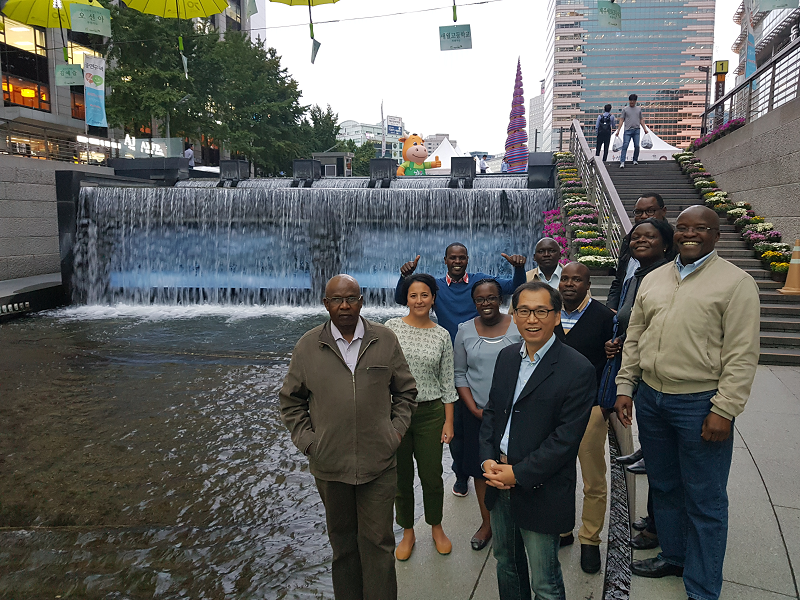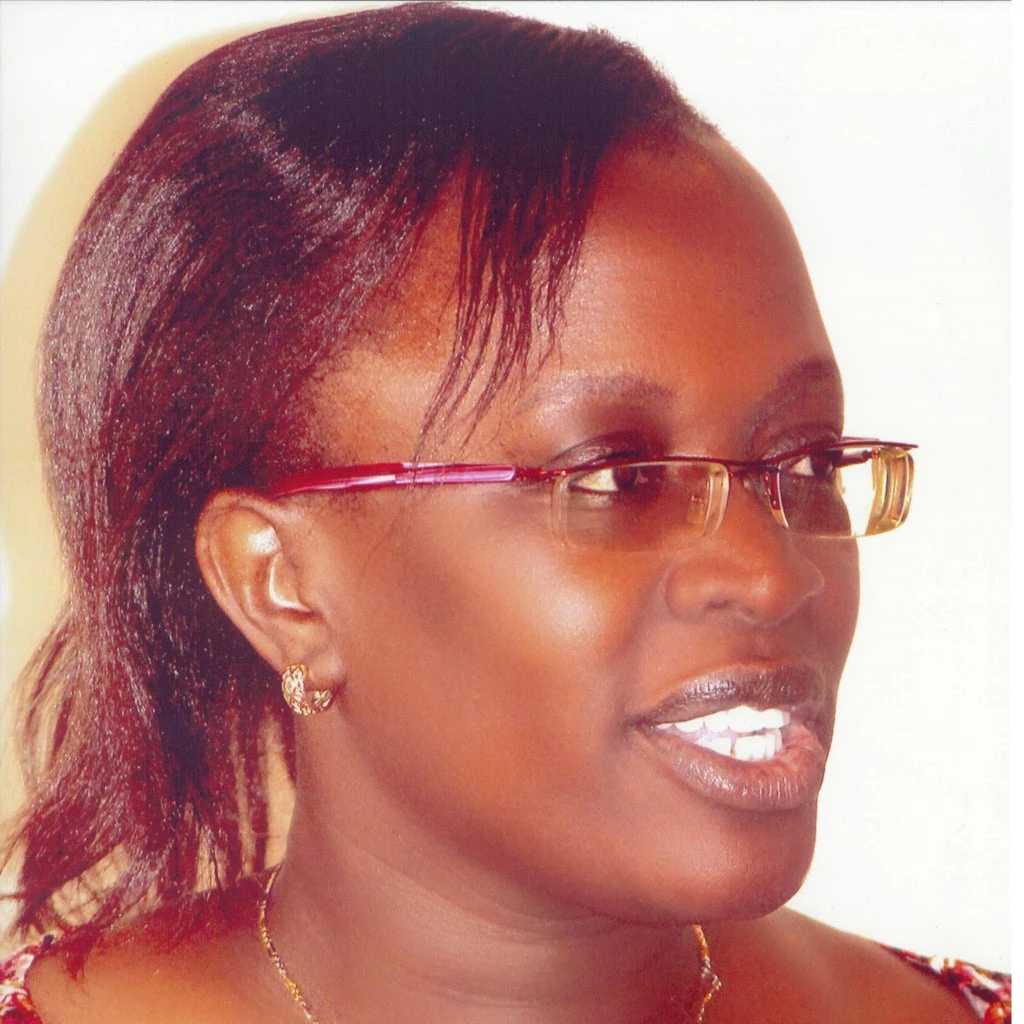Magnificent. Splendid. That was the only way to describe the intricate web of waterways, bridges, road, and rail transport that we gazed out on as our bus transported us from Incheon International Airport in Seoul, South Korea, to our hotel. The learning from our Knowledge Exchange had started even before the event had officially begun! All along our winding drive, the infrastructure on display demonstrated an appreciation and understanding of the importance of working with, rather than against, nature. Green Growth, they call it.
It was an apt introduction. That’s because the Korean Green Growth Trust Fund, in collaboration with the World Bank Water Global Practice, had organized a Knowledge Exchange event that would focus on water-related issues; how to mainstream green growth concepts in water resource management; and water and sanitation service provision.

Why Korea?
I was in Korea with a team of Kenya government officials from the Ministry of Water and Sanitation; the Water Services Regulatory Board; the Water Resource Management Authority, the Coast Water Services Board; the Athi Water Services Board, and the County Government of Nakuru.
For us, an appreciation of the history of South Korea was a key part of our learning experience. It’s phenomenal post-war reconstruction and rise from the ashes of the Korean War that ended in 1953 (just 10 years before Kenya’s own independence from the British in 1963) provided a serious testament to what can be achieved through sheer will, determination, and a shared vision. And perhaps the role of adversity in helping set the national resolve of a people.
Korea, we were told on a visit to the National Museum of Korean Contemporary History, was almost decimated after the war, and its people barely had water to drink. Today, service provision in the capital city, Seoul, is at 99.9% (from 22% in 1960), and the country has progressed from providing sanitary water, to safe water, to today - providing clean, healthy water. All this, for a population almost equal to Kenya’s 50 million, yet only covering one-third of Kenya’s geographical area. In addition, 65% of South Korea is mountainous, making water storage that much more difficult.
Key Learnings
Korea impressed us with its use of integrated data and Information, Communication and Technology (ICT) for disaster forecasting, planning, & response; the clear division of roles between ministries and agencies; the self-regulation of the industry; and overall inclusion of environmental aspects in infrastructure development (Green Growth). In particular, the reclamation and restoration of the Cheonggyecheon River resonated well with the delegation, as Kenya is in the process of reclaiming and cleaning up the Nairobi River, a process that requires intense political courage, stakeholder engagement, and deep commitment to green growth principles.
An interesting story of restoration and renewal (and political courage!) …
Cheonggyecheon River was once a symbol of the culture of the people of Seoul, a place where traditional celebrations were held, where women did their washing and children played. But the Korean War destroyed a third of the nation’s housing, and over time the poor people built settlements and shanty towns alongside the stream. Pollution and crime became serious problems. In 1958 the decision was taken to cover the stream for public safety, and from 1968—1978 the Cheonggyero Expressway was constructed over the covered stream.
However, as demand grew for a better quality of life, a vision for recuperation of the environment and restoration of local culture emerged, and in 2002 Mayor Lee Myung-Bak of Seoul City launched the restoration program for the Cheonggyecheon River. This would be no small feat, as the area had become the most overcrowded part of the city, with 60,000 businesses, 200,000 shopkeepers, an estimated 170,000 vehicles using the elevated expressway, and 1 million people passing through the area per day, causing traffic chaos, severe congestion and crime. It would involve the destruction of an estimated 5 kilometers of elevated motorways, 7 pedestrian overpasses, thousands of pillars, and other materials, totaling 907,000 tons in estimated volume of waste. It was also a hot political issue necessitating over 4,000 stakeholder consultations.
The restoration of the river, completed in 2005, has greatly affected other streams. Streams that had died, were revived. Water-friendly spaces for citizens were created, and vegetated revetments covered with natural grasses, instead of concrete, were set up. The average daytime temperature in the area dropped.

…and other stories!
The delegation still had time (and a sense of adventure!) to explore the cultural treats that South Korea had to offer. Meal times provided hilarious opportunities to watch the delegation try to get down to sit on the floor for lunch (and fail to get up!) as well as successful (and not so successful!) attempts to use chopsticks. The South Korean nature of great hospitality (the delegation felt expected and welcomed at every meeting) exceeded even the famed Kenyan hospitality and was a treat in itself. Some of the richest insights and strongest connections were forged during these communal experiences
Next steps
The delegation is looking forward to further strengthening the learning and collaboration linkages with the Government of South Korea with tailored knowledge exchange and technical assistance on water-related issues, including: (i) training and capacity building from K-Water Academy to Kenya Water Institute to support its role as a national training institution to increase the competence of water service providers; (ii) Ministry of Environment support on developing and implementing a national water resources strategy; and (iii) Technical assistance on dam safety, and integration of ICT in various water-related areas, amongst others. Important connections have been made for this, and a knowledge action plan is in the making.
Editor's Note:
The Korea Green Growth Trust Fund is a partnership between the World Bank Group and the Republic of Korea, established in 2011 to support client countries as they shift to green development path. Both partners share a common goal to reduce poverty and promote shared economic prosperity in an environmentally responsible and socially inclusive way.
The Trust Fund finances on-the-ground programs as well as knowledge exchange activities, and to date has approved 132 programs in the urban, transport, information and communication technology, energy, environment, water, and climate sectors. Based on strong performance, as well as increasing demand for collaborative development implementation programs, the fund has grown from US$40 million to US$88 million WBG programs through 2021.


Join the Conversation